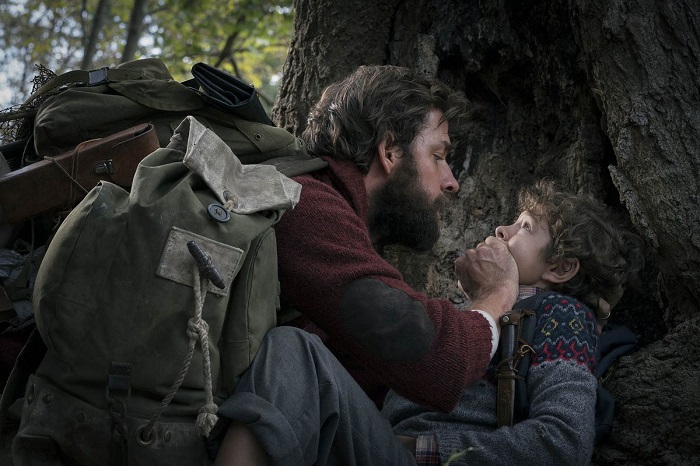One of the most tried and tested ways that Hollywood has found to sell horror movies to the public is to bill them as “based on a true story” or “inspired by actual events.” This piques the interest of moviegoers, no matter how dubious the claim may be. Case in point: the 1979 classic The Amityville Horror.

The Amityville Horror is about a couple named George and Kathy Lutz (The Car’s James Brolin and Margot Kidder from Black Christmas) that buys a spacious home on Long Island for a song. The reason it’s so cheap is because a man killed his entire family in it a year or so before. Nevertheless, George and Kathy, along with their three kids (Meeno Peluce from The Ghost of Flight 401, K.C. Martel from Bloody Birthday, and Natasha Ryan from The Entity), move into the house. And almost immediately, the strange occurrences start.

First, Father Delaney (On the Waterfront’s Rod Steiger), the priest who comes by to bless the home is accosted by flies and driven from the property by a demonic voice. Then, doors and windows inexplicably lock and unlock, causing stress and strife amongst the kids. Next, black and green slime permeate the plumbing and the walls. And the young Lutz daughter is visited by a ghostly pig named Jody, which she innocently befriends. This isn’t even mentioning the weird red room that George finds behind a brick wall in the basement. Even with all of the havoc, the Lutzes are in their dream house. But how long will they stay?

Based on a “true-crime” book by author Jay Anson, The Amityville Horror was written by Sandor Stern (Shark Kill) and directed by Stuart Rosenberg (Cool Hand Luke). It’s a spooky and ominous movie, and while the authenticity of the events in the film are suspect, one thing is certain; with The Amityville Horror, Stuart Rosenberg basically reinvented the haunted house movie, creating the standard by which all paranormal movies that came after it would be measured.

For as captivating of a story as it is, much of The Amityville Horror has been debunked as a hoax. Reportedly, the story was cooked up over a few bottles of wine by the Lutzes and William Weber, who was the defense attorney for the killer of the family who lived in the house before. The Lutzes wanted to get rich, and Weber wanted to use the haunting to get a new trial for his client, so the tale was sold to Jay Anson, the book was written, and history was born. But, many of the people involved with the house, from the priest who blessed it to the family who moved in after the Lutzes, have disputed most of the claims in the book and movie. George Lutz would defend his version of events right up until his death, and one of the Lutz children, Daniel, is the focus of a documentary called My Amityville Horror in which he vehemently claims everything was true (although he shifted the focus from the grisly murders to his father and a possible witchcraft angle). True or not, it’s clear that at least Daniel Lutz believes it all happened.

Also true or not, The Amityville Horror had enough hype to launch itself into pop culture history. In the late seventies, the book was everywhere, and the “true story” angle made the movie a smash hit. The house was featured on morning news shows and prime-time exploitation programs like “That’s Incredible!” People who lived in the area would visit the property at 112 Ocean Avenue, and everyone who did would conveniently claim to have experienced some type of paranormal activity. The movie’s promotional campaign was relentless, and it worked a little too well; there are countless sequels to the movie, so much so that the franchise has become a running joke in horror movie circles.

The house itself is the most frightening aspect of the movie. Its image is both famous and infamous, with its recognizable two quarter-circle attic windows keeping watch over the property like a pair of all-seeing eyes. With the exception of a quick glance of Amy’s imaginary pig-friend Jody’s light-up eyes in the dark, the spirits never manifest into a visible form in the movie, so the house becomes the de-facto antagonist of the film. Which is understandable, because the house is the root of the problem. And the house is the iconic image that is associated with The Amityville Horror and its legacy.

The Amityville Horror may have been a box office success, but it garnered only a single Academy Award nomination, one for Best Original Score. The music was written by legendarily prolific film composer Lalo Schifrin (The Manitou, Class of 1984, The New Kids), who had worked with Stuart Rosenberg before. The score is essentially a one-trick pony, with the same melodic theme being performed over and over by different instruments in different arrangements, sometimes a children’s choir, other times a flute or a string section. But that one theme is a killer. The score for The Amityville Horror is one of the most memorable pieces of music in horror history.

Whether The Amityville Horror is actually true or not is up for debate, but in the end, who cares? The world got a great horror movie out of it, and that’s more important to most people than any “inspired by actual events” tag.
